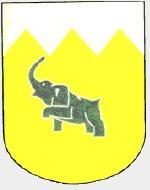Corgi AA32515 German Junkers Ju-87B Stuka Dive-Bomber - Alfons Orthofer, II/Sturzkampfgeschwader 77, Breslau, Germany, 1939 (1:72 Scale)
"Guns before butter. Guns will make us powerful; butter will only make us fat."
- Reichsmarschall Hermann Goering, Head of the German Luftwaffe
 The Junkers Ju 87 or Stuka (from Sturzkampfflugzeug, "dive bomber") was a two-seat (pilot and rear gunner) German ground-attack aircraft. Designed by Hermann Pohlmann, the Stuka first flew in 1935 and made its combat debut in 1936 as part of the Luftwaffe's Condor Legion during the Spanish Civil War.
The Junkers Ju 87 or Stuka (from Sturzkampfflugzeug, "dive bomber") was a two-seat (pilot and rear gunner) German ground-attack aircraft. Designed by Hermann Pohlmann, the Stuka first flew in 1935 and made its combat debut in 1936 as part of the Luftwaffe's Condor Legion during the Spanish Civil War.
The aircraft was easily recognizable by its inverted gull wings, fixed spatted undercarriage and its infamous
Jericho-Trompete ("Jericho Trumpet") wailing siren, becoming the propaganda symbol of German air power and the "Blitzkrieg" victories of 1939-1942. The Stuka's design included several innovative features, including automatic pull-up dive brakes under both wings to ensure that the plane recovered from its attack dive even if the pilot blacked out from the high acceleration. Although sturdy, accurate, and very effective, the Ju 87 was vulnerable to modern fighter aircraft, like many other dive bombers of the war. Its flaws became apparent during the Battle of Britain; poor maneuverability, lack of speed and defensive armament meant that the Stuka required a fighter escort to operate effectively.
The Stuka operated with further success after the Battle of Britain, and its potency as a precision ground-attack aircraft became valuable to the German war effort in the Balkans Campaign, the African and Mediterranean Theaters and the early stages of the Eastern Front campaigns where Allied fighter resistance was disorganized and in short supply. However, once the Luftwaffe had lost air superiority on all fronts, the Ju 87 once again became an easy target for enemy fighter aircraft. In spite of this, because there was no better replacement, the type continued to be produced until 1944. By the end of the conflict, the Stuka had been largely replaced by ground-attack versions of the Focke-Wulf Fw 190, but was still in use until the last days of the war. An estimated 6,500 Ju 87s of all versions were built between 1936 and August 1944.
This particular 1:72 scale replica of a German Junkers Ju-87B Stuka dive-bomber was piloted by Alfons Orthofer, who was attached to II/St.G 77, then based at Breslau, Germany, during 1939.
Sold Out!
Dimensions:
Wingspan: 7-1/2-inches
Length: 6-1/4-inches
Release Date: February 2010
 Historical Account: "Media Darling" - Stuka Ju87B-1, S2+AC was piloted by Major Alfons Orthofer of Sturzkampfgeschwader 77. It was specially decorated with the rather menacing shark’s mouth for an article in ‘Signal’ magazine whilst based at Breslau, Germany, in 1939.
Historical Account: "Media Darling" - Stuka Ju87B-1, S2+AC was piloted by Major Alfons Orthofer of Sturzkampfgeschwader 77. It was specially decorated with the rather menacing shark’s mouth for an article in ‘Signal’ magazine whilst based at Breslau, Germany, in 1939.
St.G 77 saw action in both Western and Eastern Blitzkreig operations (Poland and France/Low Countries). Possibly its most notable sortie was against Fort Flémalle on May 13th, 1940.
St.G 77 was actually one of the first units ordered into enemy territory and landed at Bierset airfield whilst it was still being bombarded by Fort Flémalle. The Gruppenkommandeur very quickly led an attack that silenced the fort and demonstrated the pinpoint accuracy and destructive power that could be achieved by the Stukas.
The Stukawaffe flew a total of 300 sorties against French positions that day, with StG 77 alone flying 201 individual missions.


